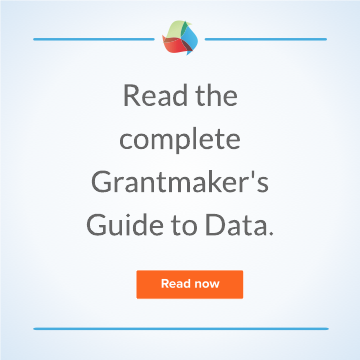
I believe the future of philanthropy is a transparent, accessible and ultimately more connected space, which will allow more vital resources to flow to the people and organizations working to make the world better.
And I believe technology has the potential to help create more meaningful impact. But technology doesn’t do this on its own. It needs you.
So when gazing into the bright future of your grantmaking, remember these three guiding principles.
- Say yes to tech.
- Embrace transparency.
- Foster collaboration.
Say Yes to Tech
Research shows that Foundation executives aren’t at the forefront of adopting new technology, even as a majority are actively seeking new grants management systems.
Technology has never played a more important role in the way grantmakers work. The way foundations communicate, collaborate, and organize their workflow is becoming increasingly paperless – and for many it all takes place in the cloud. But for some foundations it’s hard for staff to take full advantage of technology’s potential if foundation leaders aren’t developing strategic vision with technology in mind.
At the heart of the technology stack within foundations is grants management software. The good news for smaller and mid-sized foundations is that some of the biggest foundations in the world have put vendors through their paces. The technology just keeps getting better, and Fluxx has emerged as a leader.
Also, onboarding processes are only getting easier. After hundreds of implementations at Fluxx, we can tell you, the hard work has been done and new implementations are more streamlined and effective than ever before.
What it comes down to is this: The impact you make will be well worth the return on technology investment.
Embrace Data Transparency
As technology advances, and faster ways of sending and receiving information become commonplace, foundations – and most everyone else – are beginning to understand that collaboration, rather than independence, fosters excellence.
And collaboration works best when a transparency mindset is embraced.
Foundations can now tap into a torrential flow of data, harness it, analyze it, and ultimately use it to make real progress on the issues they care about most. When foundations open up and share this data with each other, and the rest of the world, the progress is outsized.
Opening an incoming and outgoing stream of programmatic data, evaluation data, and publicly available data allows foundations to collaborate better (with both their grantees and other foundations), create communities of shared learning, and strengthen credibility and public trust.
These days, we expect information to be available any time and anywhere – our workplaces, the marketplace, and our social spaces have become increasingly open and collaborative – transparent even. Why should philanthropy be different?
Foster Collaboration With Data
Collaboration comes in many forms: from pooled funding to strategic alignment and everywhere in between. And each kind of collaboration differs in a variety of ways, according to the Bridgespan Group, “whether it is the flow of funds, decision-making, expectations and roles of funding partners, or legal structure.”
Whatever the form, funder collaboration is essential in realizing "the kind of social impact that we all aspire to,” said Larry McGill, senior vice president of research at the Foundation Center. And easy access to good data plays a critical role in effective collaborations.
“If you have increasingly good data about the social issues that people are working on … the organizations that are trying to intervene, the strategies they are employing, and the successes and failures they are experiencing … all this means that you can build on the work that others are doing and find your place in the context of all that is being done. In practice, philanthropy should be able to collaborate a lot more meaningfully,” McGill said.
The use of smart technology by smart people is shrinking the often-debilitating disconnect between funders and their grantees. The values of transparency and real-time connectedness that we see in the business and consumer environment today are informing how philanthropy works.
Combine these values with the rapid pace of technological advances and we're poised to see an era where philanthropic dollars make unprecedented impact in a near frictionless grantmaking ecosystem.
